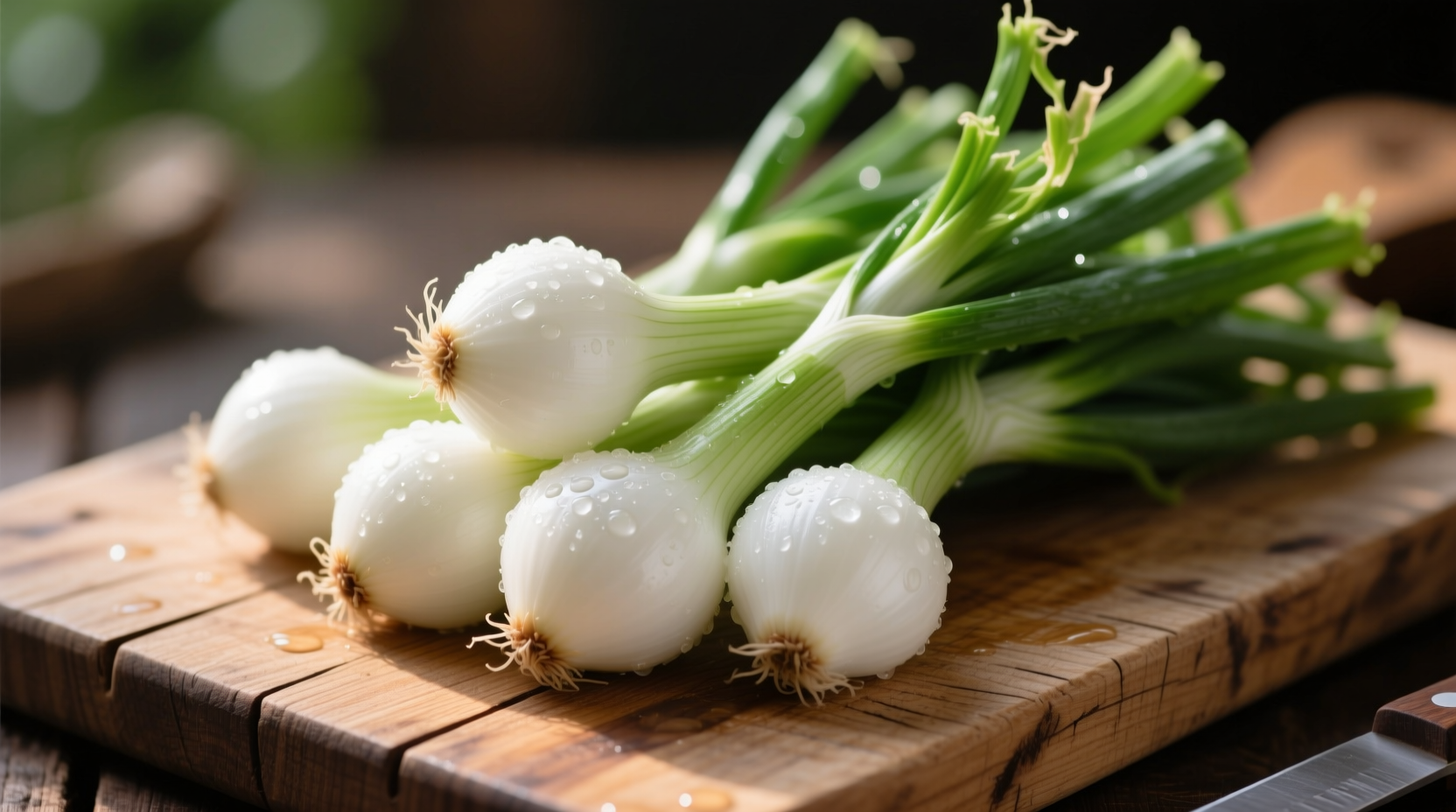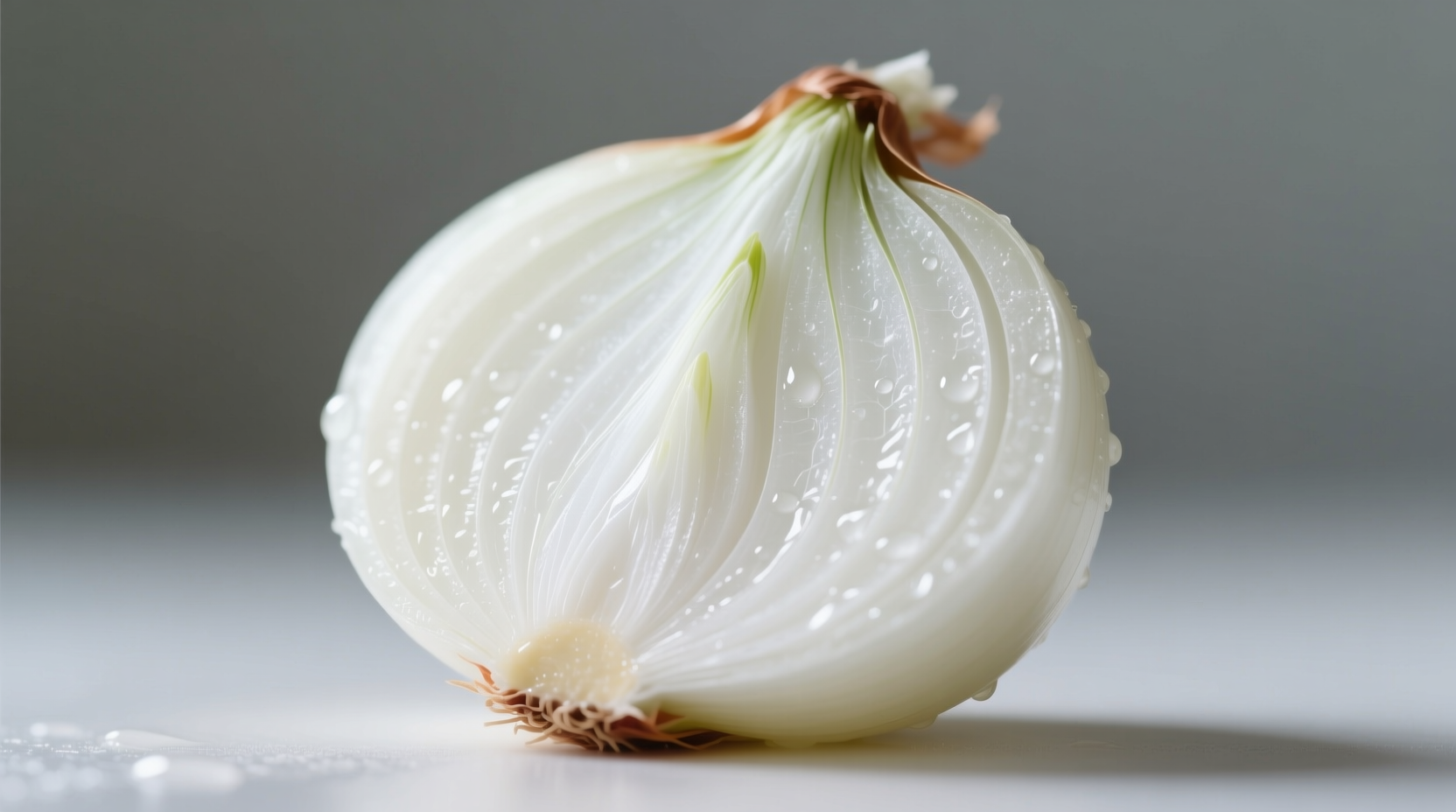Discover why professional chefs and home cooks increasingly reach for white onions when crafting authentic Latin American dishes, fresh salads, and delicate sauces. This comprehensive guide reveals the specific culinary advantages of white onions compared to other varieties, backed by agricultural research and professional kitchen experience.
Understanding White Onion Characteristics
White onions (Allium cepa var. aggregatum) stand apart from their yellow and red counterparts through several distinctive features. Their thin, papery white skin covers crisp, juicy flesh with a higher water content (89% versus 86% in yellow onions) that contributes to their milder flavor profile. This characteristic makes them particularly valuable in dishes where onion flavor should enhance rather than dominate.
| Onion Variety | Flavor Profile | Best Culinary Uses | Storage Duration |
|---|---|---|---|
| White Onion | Mild, slightly sweet, less pungent | Raw applications, salsas, ceviche, salads | 2-3 weeks refrigerated |
| Yellow Onion | Strong, pungent when raw, sweet when cooked | Cooking, caramelizing, soups, stews | 1-2 months in cool, dark place |
| Red Onion | Sharp, slightly sweet, colorful | Garnishes, salads, pickling, grilled dishes | 2-3 weeks refrigerated |
This comparison, verified by the USDA Agricultural Research Service, demonstrates why white onions excel in raw preparations. Their lower sulfur content (approximately 15% less than yellow onions) creates a more delicate flavor that won't overwhelm fresh dishes.
Where White Onions Shine in the Kitchen
Professional chefs consistently choose white onions for specific applications where their unique properties deliver superior results:
- Salsas and fresh condiments: White onions maintain their crisp texture without overpowering other ingredients
- Ceviche and raw fish preparations: Their mild flavor complements delicate seafood without harsh aftertaste
- Mexican and Latin American cuisine: Essential for authentic pico de gallo, guacamole, and fresh salsas
- Light-colored sauces: Won't discolor white sauces or mayonnaise-based dressings
- Quick-pickled onions: Absorbs vinegar flavors beautifully while maintaining crunch

Nutritional Benefits Backed by Research
According to the USDA FoodData Central, white onions offer impressive nutritional benefits per 100g serving:
- 36 calories with zero fat content
- 8.3g of carbohydrates including 1.7g dietary fiber
- Significant vitamin C (7.4mg) and B vitamins
- Rich in quercetin, a powerful antioxidant
- Contains allicin compounds with anti-inflammatory properties
Research published in the National Center for Biotechnology Information confirms that white onions retain more of their beneficial compounds when used raw compared to cooked applications, making them particularly valuable in fresh preparations.
Practical Selection and Storage Guide
Maximize your white onion experience with these professional tips:
Selecting Quality White Onions
- Choose firm bulbs with dry, papery skin
- Avoid onions with soft spots, mold, or green sprouts
- Heavier onions typically indicate higher moisture content and freshness
- Look for tight necks without bulging
Proper Storage Techniques
Unlike yellow onions, white onions require refrigeration for optimal freshness. The National Center for Home Food Preservation recommends:
- Store in the refrigerator crisper drawer in a mesh bag
- Maintain humidity at 65-70% for best results
- Use within 2-3 weeks for peak flavor and texture
- Never store near potatoes, which release gases that accelerate spoilage
Preparation Tips for Maximum Flavor
- Cut just before use to preserve flavor compounds
- Soak sliced onions in ice water for 10 minutes to reduce sharpness
- Use a sharp knife to minimize cell damage and prevent excessive tearing
- Store cut onions in airtight containers for up to 5 days
Common Questions About White Onions
Can I substitute white onions for yellow onions in recipes?
Yes, but with important considerations. White onions work well as substitutes in raw applications like salads and salsas where their milder flavor is advantageous. For cooked dishes requiring caramelization or deeper flavor, yellow onions generally perform better due to their higher sugar content. In soups and stews, you can substitute white for yellow onions at a 1:1 ratio, but expect a slightly less robust final flavor.
Why do white onions make me cry less than other varieties?
White onions contain lower levels of sulfur compounds compared to yellow onions, which means they release fewer syn-propanethial-S-oxide molecules—the chemical responsible for eye irritation when cutting onions. This makes them a preferred choice for raw preparations when you want onion flavor without excessive tearing. The difference is particularly noticeable when preparing large quantities for salsas or salads.
Are white onions healthier than other onion varieties?
All onion varieties offer significant health benefits, but white onions contain slightly higher levels of certain antioxidants like anthocyanins compared to yellow onions. Research from the Journal of Agricultural and Food Chemistry shows white onions maintain more of their beneficial compounds when used raw, making them particularly valuable in fresh preparations. The nutritional differences between varieties are relatively minor, so choosing based on culinary application is generally more important than small nutritional variations.
What makes white onions essential in Mexican cuisine?
White onions are fundamental to authentic Mexican cooking because their mild, clean flavor complements rather than overwhelms other ingredients. Traditional Mexican salsas, guacamole, and ceviche rely on white onions to provide necessary onion flavor without the harsh aftertaste of stronger varieties. The culinary tradition developed this preference because white onions grow well in Mexico's climate and their flavor profile perfectly balances the complex spice blends used throughout the cuisine.











 浙公网安备
33010002000092号
浙公网安备
33010002000092号 浙B2-20120091-4
浙B2-20120091-4